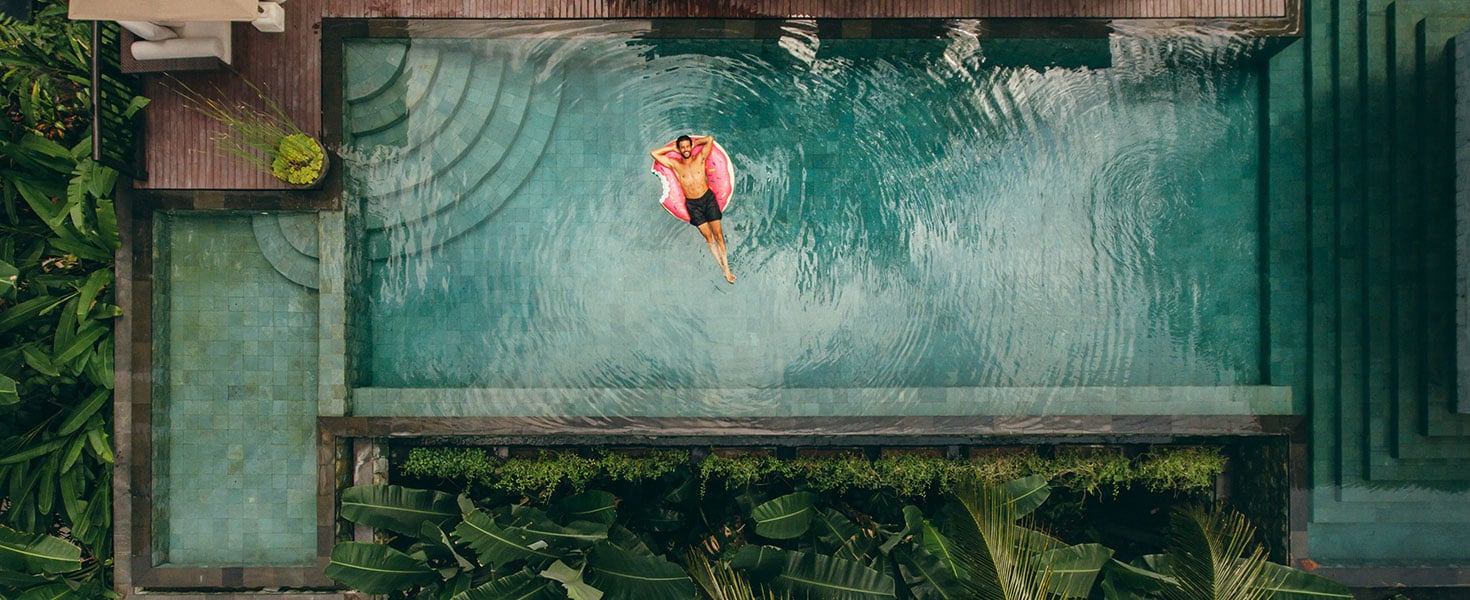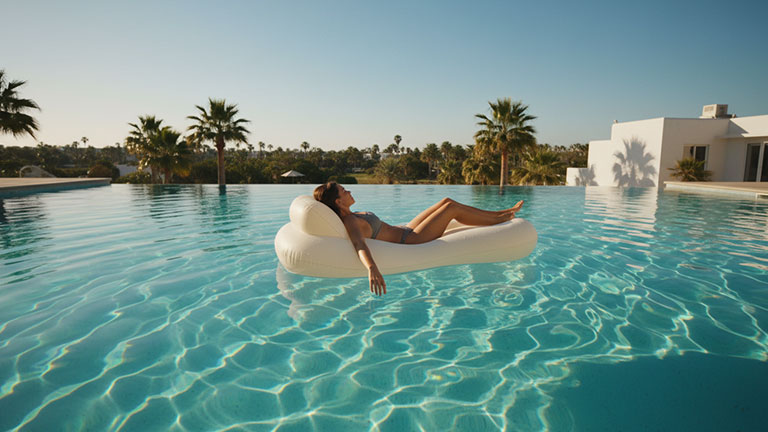The Rise of the Calmcation: Why Rest Is the New Luxury
If your getaways leave you more frazzled than refreshed, it’s time to rethink the way you travel—and rediscover the joy of doing less


Have you ever returned from vacation more exhausted than when you left, already craving another break to recover from your break? Me, too. Between racing through museums, cramming in every “must-see” attraction, and documenting it all for social media, modern travelers often find their vacation feels more like a marathon than a respite.
Enter the calmcation—a purposeful approach to travel that prioritizes restoration over résumé-building and presence over passport stamps.
A calmcation is exactly what it sounds like: a vacation designed around calm. It's travel that leaves you genuinely refreshed, not burnt out. While calmcations share some DNA with slow travel—both reject rushed itineraries—the distinction matters. Slow travel emphasizes cultural immersion and deep connection with destinations. A calmcation focuses specifically on your well-being and mental restoration. And in our always-on, overstimulated world, this intentional shift toward restful rather than rushed travel isn't just nice—it's necessary.

Why calmcations matter
Traditional vacation planning often operates on a scarcity mindset: Since you've invested time and money to get somewhere, you should maximize every moment. But this pressure-cooker approach often backfires, leaving you stressed, overscheduled, and oddly disconnected from the very experiences you traveled to have.
According to a 2026 Hilton Trends Report, travelers are increasingly craving authentic, slower-paced experiences. Rest, reflection, and unhurried exploration deliver real mental health benefits while naturally supporting more mindful, sustainable travel choices.

The core qualities of a calmcation
The essence of a calmcation can be captured in four guiding principles:
- Quality over quantity: A calmcation trades the greatest hits tour for restorative depth. Instead of squeezing three cities into one week, spend that time in a single location that invites you to slow down and settle in.
- Mindful pacing:You're not filling every hour; you're protecting empty space for genuine rest. Schedule just one or two relaxing activities per day, and let the rest unfold naturally.
- Present-moment focus: A calmcation asks you to be fully present. Set boundaries with technology, and resist documenting everything. Engage your senses: taste, listen, notice, breathe, rest.
- Intentional connection: Calm doesn’t have to mean solitude. Whether it’s lingering over dinner with locals or soaking in quiet moments with loved ones, prioritize experiences that nurture meaningful connection rather than rushing through a packed itinerary.

How to plan your calmcation
Turning intention into action starts with how you plan. A calmcation begins long before you arrive; it’s shaped by how you choose, pace, and plan to experience your journey. Here’s how to craft one that truly restores you.
Choose the right destination
No matter the destination, a restorative trip doesn't happen by accident. It requires deliberate choices about where you go, how you get there, and what you do once you arrive. Here's your planning guide.
“If you can drive somewhere, you can maximize your time in the destination itself, rather than in the air,” says Kelley Louise, a sustainable travel expert and founder of Impact Travel Alliance.
Nearby coastal villages, mountain hideaways, and countryside retreats all lend themselves to restorative rhythms.

Design a slower itinerary
Choose accommodations that feel like a sanctuary, not just a place to sleep. Then build your days around rest rather than attractions.
Louise emphasizes the beauty of simplicity, saying it comes from “staying in a charming small town for a longer amount of time, taking daily walks, visiting local restaurants.” The goal isn't cultural education; it's giving yourself permission to simply be.
Incorporate wellness experiences
Weave in activities that promote calm, such as spa treatments, gentle yoga, or leisurely cooking classes. Easy outdoor exploration—for example, kayaking, hiking, swimming—engages your body without exhausting it. Choose what genuinely relaxes you, not what sounds impressive.

Build in digital detox practices
Set yourself up for success before you leave with a digital detox. Activate your out-of-office reply, delete work email from your phone, or establish specific “offline hours” each day. Replace screen time with analog pleasures: paperback novels, handwritten journals, and conversations that meander without agenda.
Embrace local rhythms
Rather than frantically sightseeing, establish gentle daily rhythms. Visit the same neighborhood café each morning. Take an afternoon siesta. Watch the sunset from the same spot each evening.
Louise notes that meaningful travel is about “connection over consumption”—and that includes connection with yourself.

Be thoughtful about transportation
How you get somewhere shapes your stress levels before you even arrive. When possible, choose scenic drives, train rides, walking, and bicycle exploration. They all support the calmer pace you're cultivating and reduce pre-vacation exhaustion.
“The shift in transportation allows you to gain a deeper appreciation of that region since you can watch the landscapes change as you pass by,” Louise explains.

Plan for the time you have
Don't let limited time discourage you. A three-day weekend absolutely can be a calmcation if you prioritize rest over activity. Even a single overnight trip can embody these principles if you approach it intentionally. The key isn't duration; it's making restoration your primary goal.
…..
Ultimately, a successful vacation doesn't require an exhaustive itinerary or a camera roll bursting with proof. It requires only that you return home feeling rested, restored, and genuinely glad you went. Your next trip can be different. It can be calmer. It can prioritize your well-being. All it takes is choosing rest in a world that constantly demands rush.
